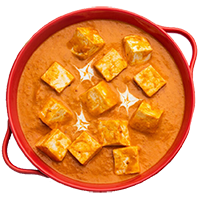People all over the world have fallen in love with Japanese cuisine, which has even been recognized by UNESCO as an intangible cultural heritage. Today we will look at some key historical events that shaped the Japanese foods we eat today.

1. We can’t imagine Japanese cuisine without rice. Among many of Japan’s culinary traditions from Korea and China, rice is the most significant. Rice was introduced to Japan around the end of the Neolithic Period, about 2,400 years ago, with immigrants from the continent.

2. Japanese cuisine was originally vegetarian, although fish and meat are now staples of the country’s diet. During the Kofun era (300–538 AD), when Buddhism was introduced to Japan, consuming animals was banned.

3. In the 8th century, another innovation from China—noodles—was introduced to Japan. Eventually, flour-based noodles (the udon, which is popular in Western Japan) were introduced, and in the 15th century, buckwheat (soba) was introduced. The concept of ramen is significantly more recent.

4. Soy sauce is a commonly used condiment in Japan. But Japan has only been using this soy sauce for the last century or so. Soy sauce is a Chinese invention that the Japanese seem to have perfected.

5. Even the widely consumed Japanese delicacy tempura, which derives its name from the Portuguese language, alludes to the period known as the “ember days” or “quatuor tempora,” a period of religious fasting during which the people consumed fish as they couldn’t eat meat then. Usually, the Portuguese would batter and fry their fish.

6. Contrary to popular belief, green tea actually originated in China before it was introduced to Japan in the 9th century. According to the
myth, it was found when some tea leaves accidentally fell into a kettle of boiling water that belonged to an emperor.

7. Japanese use chopsticks for eating, serving, stirring, and cooking. These chopsticks were invented during the Kofun period, and during that time, only the nobles could afford these slender utensils. As a result, so many people continued to use their hands to eat.

8. Japanese cuisine began to take shape in the 17th century in Edo, which later became Tokyo. The city now has the most Michelin-starred restaurants in the world.

9. Which sushi do you like? Oshizushi (squeezed sushi) or nigiri (hand-held sushi)? Before the invention of nigiri, oshizushi was the main sushi style in the early Edo period.

10. Umami, the fifth flavor that mixes sweet, sour, salty, and bitter, is essential to Japanese cuisine. Chemist Kikunae Ikeda created this flavor in 1908, and it may be found in a wide range of dishes, including cheese and carrots, as well as peas and pork.

11. Yatai, the method of eating while standing at food stalls, was introduced to Japan when the Edo population increased to 1 million in the 18th century due to an influx of single males.
From the roots of Japanese cuisine to its current influence, with the history of these delectable meals, we tried to provide you with a flavor of where some of the Japanese foods come from.














